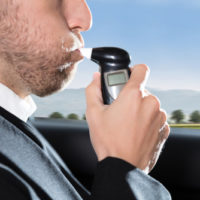Challenging The Circumstantial Evidence In A St. Lucie County DUI

If a DUI defendant provides a breath or blood chemical sample, the conviction rate is around 90 percent in many jurisdictions. Although it is not impossible to challenge the evidence in a chemical test case, it is very difficult to do so.
But if the defendant refuses to provide a chemical sample, the conviction rate may drop by as much as half, to around 45 percent.
The reason is simple. In non-test cases, prosecutors must rely on the three approved field sobriety tests for evidence of intoxication. The FSTs are basically designed to establish probable cause, which is a much lower standard than beyond a reasonable doubt. So, if prosecutors try to use the FSTs to establish guilt at trial, an experienced DUI defense attorney has an opening.
One-Leg Stand
In this test, the defendant must elevate one leg for a certain number of seconds, usually ten, without using arms for balance or swaying.
Officers always testify that the defendant “failed” this test. Sometimes, they base this assessment on technicalities, such as holding the leg at slightly the wrong angle or using the wrong foot. Most St. Lucie County jurors would not consider such a performance a “failing” grade. And, the jury’s assessment is usually the only one that counts.
Additionally, officers do not always make accommodations when needed. For example, pretty much anyone with any mobility impairment cannot perform the OLS drunk or sober. Furthermore, it is very difficult to perform this test when the sky is dark and cars are whizzing past at high speeds.
Walk and Turn
For the WAT, which is also known as the HTW (Heel-to-Toe Walk) test or the walking a straight line test, the defendant must walk a certain number of steps heel to toe, then turn around and walk back the same way.
The physical environment comes into play here as well. It is much easier to walk an actual line, like a parking lot stripe, than an imaginary line. That’s especially true if the sky is dark or there are other adverse conditions.
Additionally, the officer’s definition of “heel to toe” might be much different than the defendant’s definition. Unless the officer demonstrates the test and the defendant can clearly see the demonstration, the different standards are a serious problem.
Horizontal Gaze Nystagmus
The WAT and OLS are divided attention tests which measure both mental acuity and physical dexterity. But the HGN is purely a medical test. If the pupils move involuntarily at certain angles, the subject probably has nystagmus.
HGN tests are quite reliable, if they take place under controlled conditions. But a roadside HGN test is hardly a controlled environment. The biggest problem may be the squad car lights. Flashing strobe lights have a disorienting effect on the defendant, making it very difficult to concentrate on something like following the moving head of a pen with just the eyes.
Additionally, alcohol intoxication is not the only cause of nystagmus. In fact, it’s not even the leading case. Typically, a childhood head injury or a genetic condition causes nystagmus, which is also known as “lazy eye.” Typically, the condition is so mild that the person only displays symptoms when under extreme stress, such as a DUI arrest.
Rely on Experienced Lawyers
Circumstantial DUI cases are hard for prosecutors to win in court. For a free consultation with an experienced criminal defense attorney in Port St. Lucie, contact Eighmie Law Firm, P.A. We routinely handle matters throughout the Treasure Coast area.
Resource:
tdcaa.com/journal/new-dwi-prosecution
https://www.eighmielawfirm.com/discrediting-sobriety-test-results-in-st-lucie-county/
